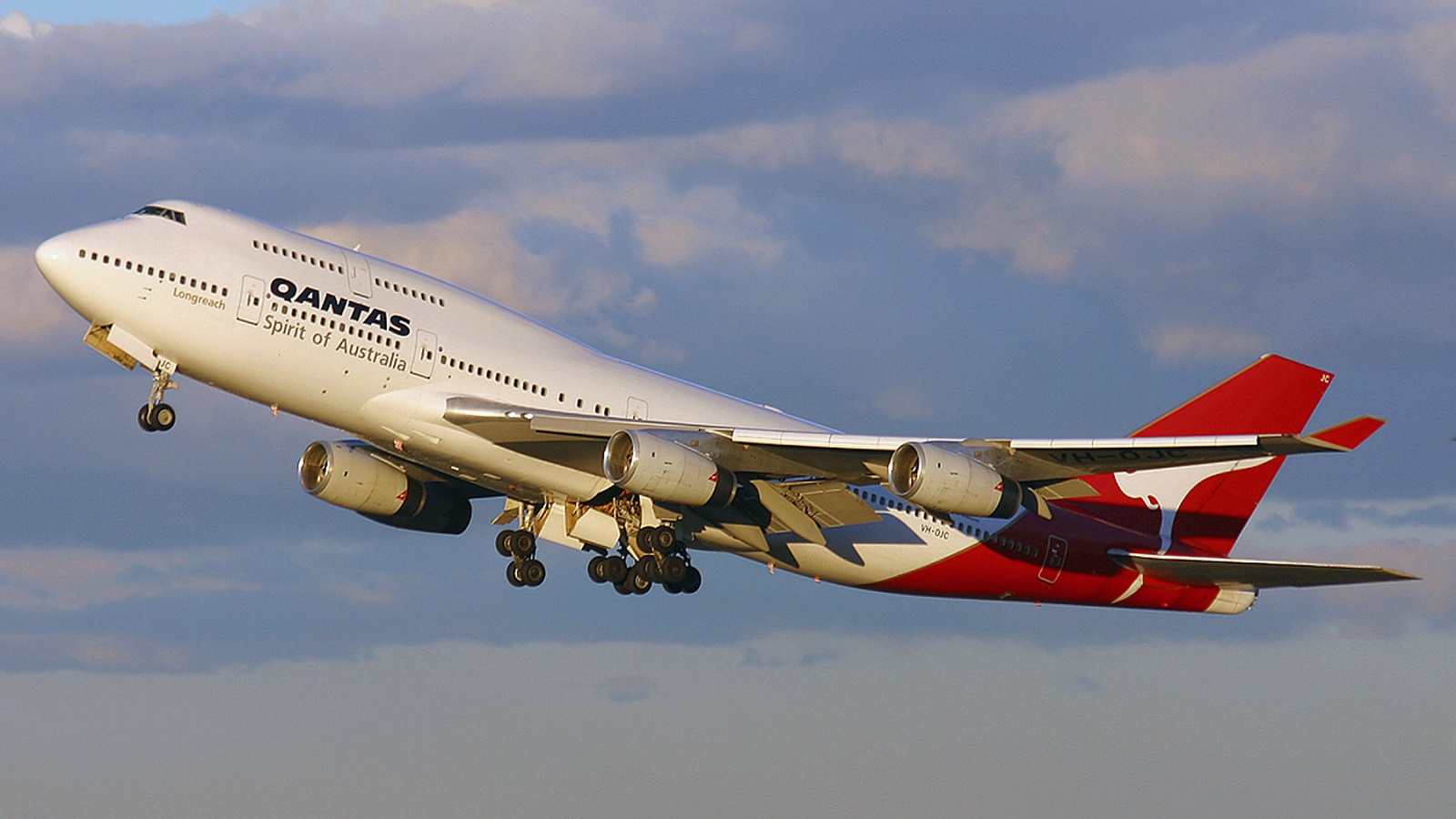Qantas is to farewell its last 747 with a series of joy flights and events this month.
The airline’s staff were advised today that there will be three joy flights in Sydney, Brisbane, and Canberra in mid-July with tickets available to the public
The premium economy cabin will be blocked for employees but the remaining seats will go on sale from mid-next week and are expected to sell out quickly
It is expected that the formal announcement will be made on Monday.
READ Boeing to end 747 production
The Flying Kangaroo has had a love affair with the 747 which started back in the late 60s when it ordered 4 of the more powerful, 747-200B model in 1967.
But at the time these four 747s were just back up to 10 supersonic transports it had ordered, made up of six Boeing 2707s and four Concordes.
However, as the folly of supersonic transport unfolded the airline’s affair with he 747 blossomed.
The first 747-200B was delivered to the airline in July 1971 and it would be followed by another 56 over 5 different variants from Boeing.

In fact, the airline has operated 65 jumbos with the additional aircraft leased in or purchased second hand during the Asian currency crisis.
The 747, like the legendary DC-3 of the 1930s, slashed airfares to make travel affordable for all.
The incredible DC-3 was the first plane that was able to make money just hauling passengers and freed airlines from restrictive mail contracts, while the 747 freed the world’s population to travel wherever they liked.
When the sponsor of the 747 Pan American World Airways’ president Juan Trippe took delivery of the jumbo, he said we are in a race between the 747 and the ICBM (Intercontinental Ballistic Missile) and he said I believe the 747 will win.
When the jumbo was introduced 50 years ago the airfare from Australia to London and return was the equivalent of 24 weeks average weekly earnings.
Today it is below one week’s earnings.
The jumbo was a mass travel dream of Trippe and Boeing’s chief Bill Allen.
The secret was the new high bypass engines that could produce over twice the thrust of the existing engines could do it at the time while using one third the fuel.
However, airlines were scared of the 747 with its enormous size.
It is impossible to find anyone who recalls if there was a definitive business plan for the 747.
Traffic was booming for the airline industry which had enjoyed growth of 15 percent a year through the early 1960s as passengers flocked to jet aircraft.
Pan Am had ordered 25 but most airlines were terrified of the jumbo’s size.
Qantas ordered 4, British Airways just 6, while many airlines just ordered 2 or 3 just to stay in the jumbo race.
Building the world’s largest commercial jet was also a major challenge. It was overweight, couldn’t reach its promised cruising altitude and the engines distorted.
These problems were solved but they almost bankrupted Boeing, Pratt and Whitney, and Pan Am.
While airlines were wary, passengers loved the 747 with its twin-aisles and upstairs lounge for first class.
Qantas called its lounge Captain Cook.

When Boeing first delivered the jumbo economy class was in a very generous layout of 2-4-3 with up to 10cm more legroom that today.
Sir Freddie Laker with his “no-frills” Skytrain DC-10 flights was to change all that.
He slashed fares by two-thirds across the North Atlantic in 1977 and he had applied to fly to Australia and Hong Kong.
Airlines responded by cramming more passengers into their 747s and DC-10s to cut fares.
That move spawned both business class and then later premium economy classes as airlines sought to cater for all pockets and desires for space.
Qantas phased out its last Boeing 707 in 1979 and became the world’s only all-Boeing 747 airline till 1985 when it introduced the twin-engine 767.

That aircraft and similar twin-engine types were to be the jumbos undoing.
As engines became more fuel-efficient and reliable it enabled aircraft manufacturers to develop aircraft like the 365-seat Boeing 777 and the 300-seat Airbus A330 which slashed fuel used per passenger dramatically.
And they were much easier to fill than a 400-seat 747 and 500-seat A380
Those two types were quickly followed by the twin-engine 265-seat 787 and 300-seat A350 which took fuel efficiency to another level.

Compared to the first jumbo, the Boeing 777-300ER is about 35 percent more fuel-efficient per passenger and the 787-9 almost 50 percent.
Qantas used its 747s as the flagship of its international fleet until the A380 arrived in 2008 and also operated the jumbo on its peak transcontinental services between Perth and Sydney and Melbourne for many years.
While replaced by the A380 on prime routes to London and LA business passengers still preferred the 747s intimate upper deck and first-class travelers loved the seating in the nose.
Sadly that glorious 747s, with the red tail, will be cut up for scrap.
























